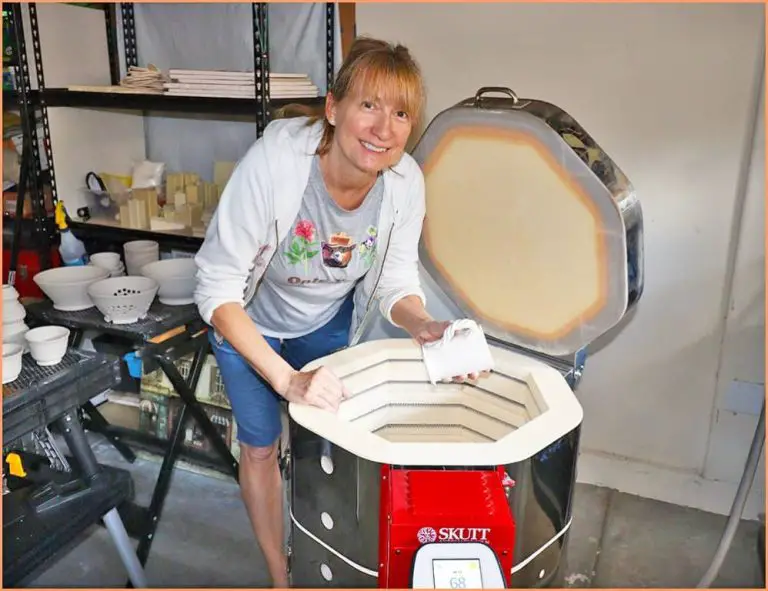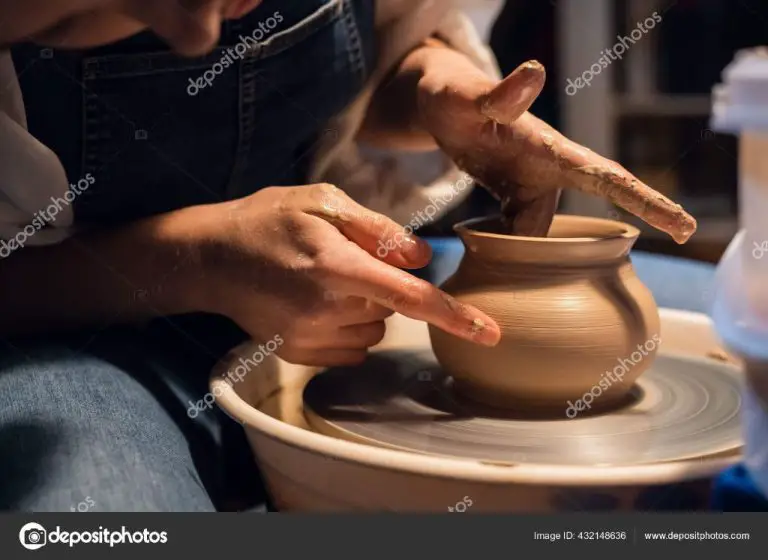Do You Seal Polymer Clay Earrings?
Polymer clay earrings have become a popular jewelry craft. Polymer clay is an oil-based modeling clay that hardens when baked at relatively low temperatures. It comes in a variety of colors that can be blended and shaped into intricate designs. Small earring pieces are easy and fun to make with polymer clay. However, polymer clay jewelry requires sealing for longevity and durability. Sealing polymer clay earrings serves several important purposes that this article will cover.
What is Polymer Clay?
Polymer clay is a moldable plastic material used for arts and crafts projects (Polymer Clay Information For Beginners, https://polymerclaysuperstore.com/pages/polymer-clay-for-beginners). Often sold under popular brand names like Sculpey or Fimo, polymer clay is a synthetic modeling clay that can be molded and shaped into all kinds of jewelry and other creative designs. While soft, it can be shaped into nearly anything. Once baked in an oven, it hardens permanently into a durable and resilient plastic (What Is Polymer Clay & What to Make with Polymer Clay, https://blog.treasurie.com/what-is-polymer-clay/).
Some key properties that make polymer clay ideal for handmade jewelry include:
- Pliable when raw – It can be kneaded and shaped by hand like clay before baking.
- Holds fine detail – Intricate designs and textures can be sculpted.
- Versatile – It comes in many colors that can be blended and mixed.
- Hardens when cured – Baking makes it into a strong, rigid plastic.
- Lightweight – Finished pieces are lightweight to wear.
- Colorfast – The colors remain vibrant even after years.
Why Seal Polymer Clay Earrings?
Sealing polymer clay earrings provides several important benefits that help the earrings last longer and look their best:
Sealing prevents fading and discoloration over time. Polymer clay can fade and change color when exposed to light, but a protective sealant acts as a barrier to UV rays and oxidation. According to Jessama Tutorials, sealing gives polymer clay “stability against ultra-violet light damage.”
Sealing gives polymer clay earrings a beautiful shine and glossy finish. Sealants like varnish or resin provide a smooth, glass-like coating. As The Blue Bottle Tree explains, “The right sealer or varnish will make the colors of the clay richer and more vibrant.”
Sealing also strengthens polymer clay pieces and earrings. It protects the clay from moisture and potential cracking or chipping. A sealant can “toughen the surface,” according to The Blue Bottle Tree. This helps polymer clay jewelry become more durable and long-lasting.
When to Seal Polymer Clay Earrings
The best time to seal polymer clay earrings is after baking and cooling the clay, but before adding any embellishments or attachments. This ensures the raw clay is properly cured and hardened before applying the sealer.
According to The Blue Bottle Tree, polymer clay on its own does not require sealing as it is naturally waterproof after proper curing in the oven. However, a protective sealer is recommended if you plan to add paints, glazes, or other materials on top of the baked clay. The sealer helps protect the clay surface and prevent embellishments from wearing off over time.
Applying a sealer coat right after baking creates a smooth sealed surface for attaching findings, beads, gems, and more. It also prevents handling marks and smudges during the embellishment process. Wait for the baked clay to fully cool before sealing to avoid cracking or crazing issues.
In summary, seal polymer clay earrings after baking but before embellishing for optimal protection and results. This seals in the clay’s natural durability while also priming the surface for additional decorative elements.[1]
Sealing Materials
There are several popular sealing materials used for polymer clay earrings and jewelry:
Polyurethane: Polyurethane is a clear, plastic coating that dries to a durable, flexible and waterproof finish. Many crafters use polyurethane sealers like Minwax Polycrylic or Varathane as they are readily available and provide good protection for polymer clay. Apply 2-3 thin coats with a brush or spray can. Allow each coat to fully dry before adding the next.
Resin: Two-part epoxy resin provides a thick, glossy and highly protective coating for polymer clay. It cures to a hard, plastic-like finish. Resin gives jewelry a glass-like appearance but can also yellow over time. Use resin sparingly as fumes are strong during application. Let pieces cure fully before wearing.
Glaze: Ceramic glazes formulated for low-fire clay work well as sealers for polymer clay. They provide a slightly textured matte or gloss finish. Follow manufacturer instructions for curing, as glazes may require baking. Multiple thin coats are recommended. Glazes are food-safe if properly cured.
Varnish: Varnishes like polycrylic, triple thick glaze and matte mediums create a clear, durable seal for polymer clay. Water-based options stay workable longer versus fast-drying spray sealers. Varnishes are versatile and come in matte, satin or gloss sheens. Use an arts and crafts varnish for best flexibility.
Application Methods
There are three main methods for applying a sealant to polymer clay earrings:
Brushing
Using a small art brush to apply the sealant is a good option for getting into small crevices and details on the clay jewelry. Make sure to use a high-quality brush with soft bristles that won’t leave behind stray hairs or streaks. Gently brush the sealant evenly over the surface in thin layers and allow drying between coats according to the product instructions.
Dipping
For jewelry pieces with an open design, dipping them directly into the sealant can ensure full coverage over all the surfaces. Hold the piece with tweezers or pliers and submerge into the sealant, move it around to coat evenly, then let any excess drip off before placing on a drying surface like wax paper. Multiple dips may be needed to build up a protective layer.
Spraying
An acrylic spray sealant can provide a quick and even coating over the entire surface of the earrings. Hold the pieces 6-8 inches from the nozzle and apply light, even coats using a sweeping motion. Rotate to coat all sides, allowing each layer to dry before the next application. Too much spray at once can cause drips or pooling in crevices.
Number of Coats
Polymer clay artists typically recommend applying 1-3 thin coats of sealer to your finished earrings. It’s important to allow each coat to fully dry before applying the next. Applying too many thick coats at once can cause problems like cracking or clouding of the top coat. A few thinner coats tends to provide better protection and a smoother finish than one thick coat.
According to polymer clay expert Kim Korringa, two coats is usually sufficient, but a third coat can help if your earrings will get a lot of wear and tear. She advises, “Apply the first coat and let it dry. Apply a second coat and let it dry. If the piece will get heavy use, apply a third coat and let it dry” (Source).
In general, when sealing polymer clay earrings, patience is key – slowly building up thin layers of sealer allows each coat to fully cure, creating a protective finish that will last.
Special Considerations
When sealing polymer clay earrings, there are a few special considerations to keep in mind regarding toxicity, embellishments, and cracking:
Some sealers like polyurethane, epoxy resin, and spray paints give off toxic fumes as they cure. It’s important to work in a well-ventilated area and avoid breathing in the fumes directly. Consider wearing a respirator mask if working extensively with these sealers in an enclosed space 1.
Sealers can interact with certain embellishments on polymer clay resulting in discoloration, bubbling, or compromising the bond. Test sealers first on beads or charms containing rhinestones, glitter, foil, or other coatings. A sealant like Renaissance Wax often works well on embellished pieces 2.
Applying too thick a coat of sealer may result in cracking as the earring flexes during wear. Opt for multiple thin layers rather than one thick layer to prevent cracking issues.
Maintenance
Because polymer clay earrings are handmade and susceptible to wear over time, some maintenance may be required to keep them looking their best. While sealing helps protect the clay, it can start to wear off over months of regular wear. Reapplying a thin coat every 6-12 months can help replenish the protective barrier and reduce chances of scratches or damage.
When resealing, carefully clean the earrings first with a soft damp cloth to remove any dirt or oils from the surface. Let them fully dry before applying a thin, even layer of sealant following the same steps as the initial sealing process. Allow to fully cure before wearing again.
To help prevent scratches, store clay earrings in a soft fabric pouch or lined jewelry box when not being worn. Avoid letting them rub against other jewelry pieces. Day-to-day, try to minimize exposure to anything abrasive that could scratch the surface. Reseal at the first sign of scratches to help fill in and smooth any small marks.
Conclusion
In summary, sealing polymer clay earrings is an important final step to help protect the clay from damage and extend the lifetime of your creations. Key points to remember are:
- Use a sealant like polyurethane, epoxy resin, or UV resin to fully seal the clay and provide a protective coating.
- Apply multiple thin coats of sealant for best coverage and allow proper drying time between coats.
- Consider the finish you want – glossy, satin, or matte – and choose your sealant accordingly.
- Seal both front and back of the earring to prevent moisture damage.
- Reseal periodically as needed when you notice wear to maintain protection.
Taking the time to properly seal your polymer clay earrings is worth the effort. Sealing will help the colors stay vibrant, prevent scratches, and make the earrings more durable for long-lasting wear and enjoyment of your handcrafted pieces.



